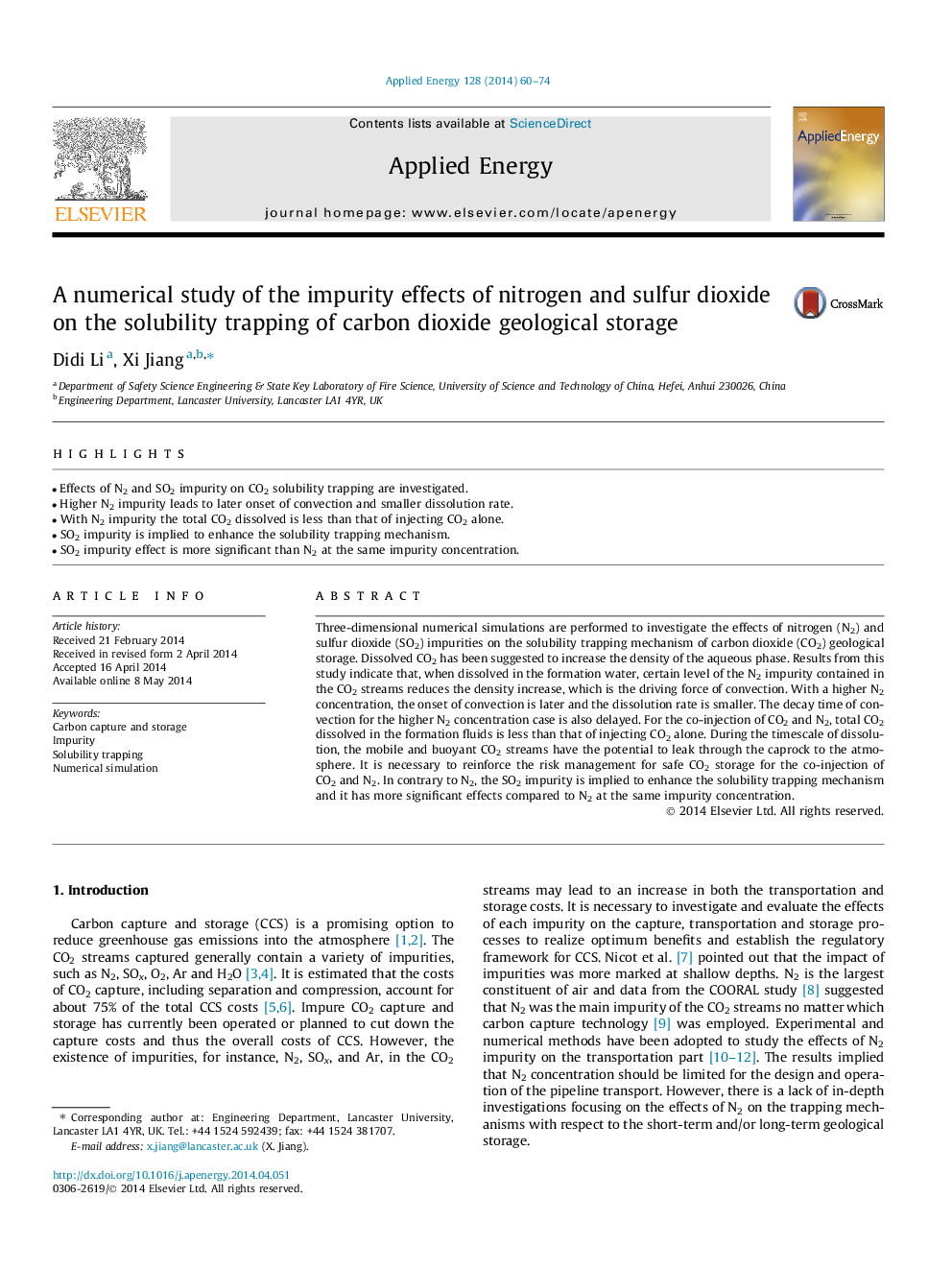| Article ID | Journal | Published Year | Pages | File Type |
|---|---|---|---|---|
| 242664 | Applied Energy | 2014 | 15 Pages |
•Effects of N2 and SO2 impurity on CO2 solubility trapping are investigated.•Higher N2 impurity leads to later onset of convection and smaller dissolution rate.•With N2 impurity the total CO2 dissolved is less than that of injecting CO2 alone.•SO2 impurity is implied to enhance the solubility trapping mechanism.•SO2 impurity effect is more significant than N2 at the same impurity concentration.
Three-dimensional numerical simulations are performed to investigate the effects of nitrogen (N2) and sulfur dioxide (SO2) impurities on the solubility trapping mechanism of carbon dioxide (CO2) geological storage. Dissolved CO2 has been suggested to increase the density of the aqueous phase. Results from this study indicate that, when dissolved in the formation water, certain level of the N2 impurity contained in the CO2 streams reduces the density increase, which is the driving force of convection. With a higher N2 concentration, the onset of convection is later and the dissolution rate is smaller. The decay time of convection for the higher N2 concentration case is also delayed. For the co-injection of CO2 and N2, total CO2 dissolved in the formation fluids is less than that of injecting CO2 alone. During the timescale of dissolution, the mobile and buoyant CO2 streams have the potential to leak through the caprock to the atmosphere. It is necessary to reinforce the risk management for safe CO2 storage for the co-injection of CO2 and N2. In contrary to N2, the SO2 impurity is implied to enhance the solubility trapping mechanism and it has more significant effects compared to N2 at the same impurity concentration.
